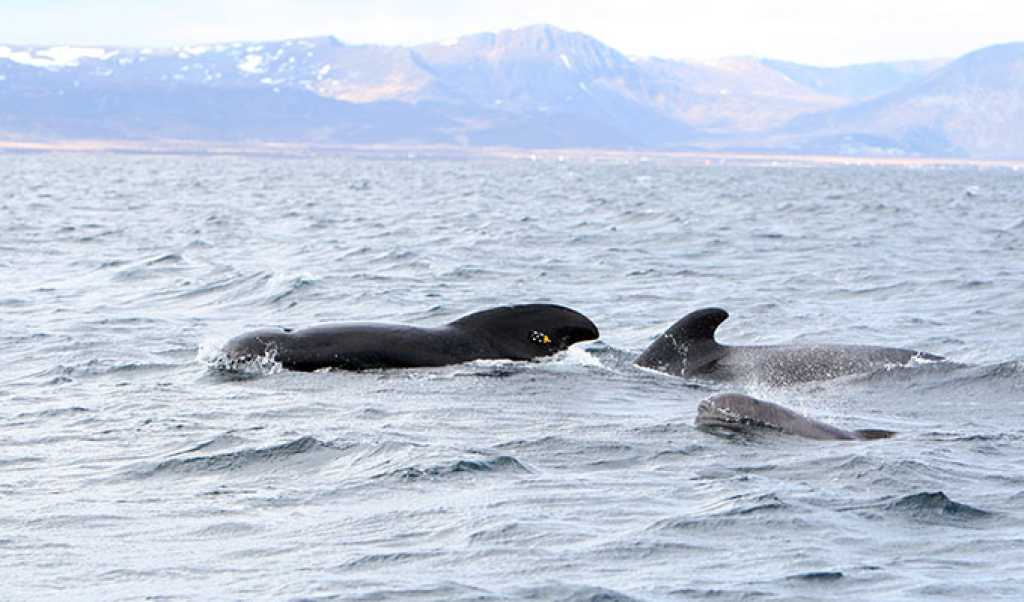How are whales affected by military sonar?
The navy's frigates have sonars that can track submarines within miles. How are whales affected by sonar signals? An international team of scientists are now on a mission around Andøya to search for new answers.

This is an machine translated text originaly written in Norwegian for the Norwegian part of the site.
In the next few weeks, scientists from seven countries are in place in Northern Norway, aboard “H.U. Sverdrup II”. The research ship sails along with the frigate “Otto Sverdrup”.
Sonar research is important, says chief researcher Petter Kvadsheim at the Norwegian Defence Research Establishment. “We need to know more, both for the sake of whales themselves, commercial interests such as whale safari and the development of new sonar technology,” he says.
For how do sperm whales, killer whales and whales react to sonars designed to search for hostile submarines?
Whaling with sensor
The practical part of the research is about specially-trained field biologists getting close to the whales. With the help of a long rod, they attach a sensor to them. The sensor is stuck on the whale by means of a suction cup. It takes less than 24 hours for the vacuum in the suction cup to be triggered and the sensor floats up.
The sensor then sends a radio signal that allows scientists to find it again. The sensor has then recorded the behaviour of animals both before, during and after exposure to the sonar sound signals.

Kvadsheim tells that similar studies have been made on sperm whales earlier. The results show that the species reacts to military sonars.
— Typical is that they interrupt normal diving and graze less when sonar activity is in progress. Unlike some other whale species, sperm whales react to a small extent to seeking away from the area. They resume normal behaviour patterns pretty quickly after the sonar signals are gone.
Big differences
The sounds from these sonars are within the spectrum that we humans can also perceive. Petter Kvadsheim explains that there are big differences between different sonars, depending on what they are used for.
— The sonars in fishing boats use the most high-frequency signals. Fish sonars “see” only up to a few thousand meters. The sound from them is absorbed into the water masses. It has been proven that fish do not actually hear the signals. The military sonars will, in turn, detect submarines from miles away. They are therefore more low-frequency, and they are audible to whales.
New pulses are tested
The two Sverdrup ships will operate in Vestfjorden, Andfjorden, Malangen and along the coast from Stø to Tromsø. The project is a collaboration between Norwegian, Dutch, British, French and US military authorities. The mission lasts from 26 August to 19 September.
— The scientists are now testing new sonar pulses. They'll see if they give more or less impact on the behaviour of the whale, compared to the sonar signals we've already tested. The results of the experiments are used to design guidelines for the use of military sonars, both in Norway, in the other countries involved and in NATO. The Norwegian guidelines will take into account environmental effects, both on the whales themselves and on how whale tourism is affected.
Strict safety precautions
— Is research dangerous for the whales?
“We have strict procedures to prevent animals from getting directly to harm. A security zone is being created around the sonar source. If mammals enter the zone, the sonar is turned off. This is, incidentally, in line with the routines the Navy itself uses during exercises. We only transmit sonar pulses for short periods of time, 40 minutes at a time.
“Moreover, we move between each attempt, to limit the impact in one area. We consider that there is little risk that the activity will affect the number of whales in the areas where whale watching companies operate. We would prefer to avoid areas where there is a high density of whales, or to be near the whale safari boats. It is not only for their sake, but also because of our research: we do not want to risk our results being affected by other vessels interfering with the whales.
Unique experiment
Petter Kvvadsheim emphasizes that the experiments conducted this year are particularly valuable.
— For the first time we will test a real sonar. Previously, tests are made in which simulated signals are used. They are not quite as powerful as those NATO's marines in many contexts use. As they still operate in this area, the Navy has put Otto Sverdrup at the disposal of this important research. We are thus testing exactly the signals that are actually used to find submarines.
The results of the whale survey will be published during the winter.